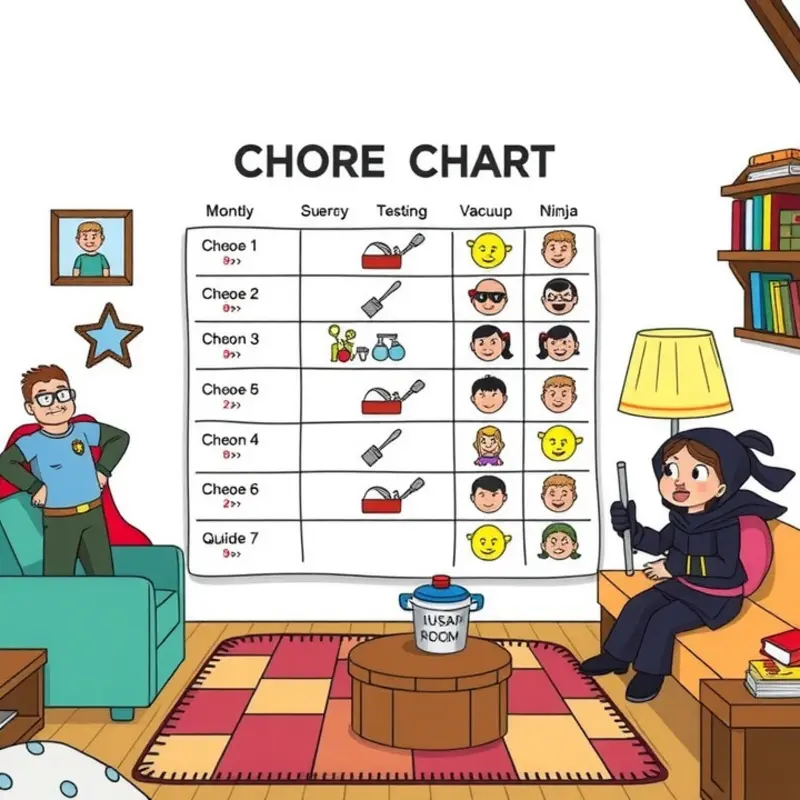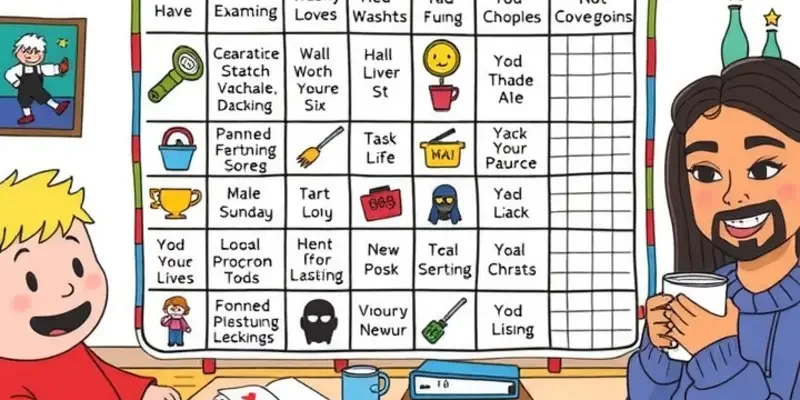Living in an apartment can sometimes feel like you’re juggling flaming swords, blindfolded. Young renters, roommates, couples, and families, all packed into the coziness of one space. But fear not! Time management isn’t just a corporate buzzword; it’s the recipe for keeping your sanity intact when laundry looms and groceries beckon. Whether you’re stepping over your roommate’s shoes or dodging the dog’s chew toys, you’ll discover that organizing your time can help unlock the hidden potential of your apartment lifestyle. From clever chore charts to optimizing family time, let’s dive into simple and effective tactics that make living well in a compact space not just possible, but enjoyable. Who said budgeting your calendar had to be boring? Let’s infuse a little light-hearted humor into the task of living together harmoniously!
Chore Charts: Your New Best Friend

Creating a fun and effective chore chart can transform your home into an efficient and joyful space. Imagine chores as less of a burden and more of a game. The division of labor in a household is essential, especially in spaces shared with roommates or families. A chore chart offers a clear and structured way to manage responsibilities while bringing everyone together, adding a splash of good-natured competition.
Begin by setting the stage for cooperation. Gather your roommates or family members and brainstorm tasks that need attention. Include both daily and weekly chores for comprehensive coverage. From taking out the trash to cleaning out the fridge, no task is too small to escape the list.
To bring fun into the equation, let’s introduce a bit of competition. Create a rewards system based on task completion. Points can be earned for completing chores efficiently or creatively. For example, the roommate who collects the most points by the month’s end gets to choose the next movie night flick, or win a coveted “Chore Champion” trophy, custom-made from any trash-to-treasure project.
Technology is your friend here. With various apps and digital platforms available, chore management can move from the fridge to your phone. Set up reminders, alarms, and checklists to keep everyone on track without the risk of ink smudges or forgotten tasks. For those willing to keep it analog, invest in colorful markers and sticky notes for each participant, creating a visual masterpiece on your communal bulletin board.
Humor is a great motivator. Infuse some lightheartedness into your chores by attaching memes or jokes to particular tasks. Imagine a pet picture reminding you to vacuum fur off the couch, or a grumpy cat meme motivating you to tackle dishes. This not only lightens the mood but keeps things fresh.
When considering practicality, dive into creating chore chart templates. Start simple: a grid with days of the week versus household members or roommates. Allocate tasks in a way that’s fair and equitable. For those in need of inspiration, check out this apartment-friendly DIY cleaning products guide, which can make some of those chores less daunting and more customizable.
Remember, a chore chart shouldn’t feel like homework. Keep it flexible and adjustable to accommodate varying schedules and unexpected life events. Rotate responsibilities regularly to avoid burnout and give everyone a chance to master a different skill. Your household will not only enjoy a cleaner space but will likely find that managing domestic duties becomes a bonding experience.
Chore charts are less of a policing tool and more of a playful roadmap to achieve household harmony. By embracing division of labor and keeping it fun and fresh, you can transform mundane duties into moments of joy and laughter. Let’s face it, adding that layer of humor and challenge makes the drudgery disappear faster than taking out the trash on a rainy day.
Scheduling Family Fun: Strategies for Bonding Time

Time allocated for family fun can transform normal days into special memories. Balancing family time with other commitments doesn’t need to be a daunting task. Instead, think of it as crafting a unique bond-building schedule that resonates well with all ages.
Start with flexibility as a core principle. Structures like rigid timeframes can add unnecessary stress. Develop a flexible schedule that accommodates spontaneous adjustments. For example, a planned park day can swiftly convert to an indoor board game session if the weather turns sour. Integrating buffer periods between activities also allows breathing space to adapt or extend activities, ensuring enjoyment stays at the forefront.
Creating a rotation system for selecting activities can further enhance the sense of inclusion and excitement. When planning, ensure that everyone gets a chance to pick their favorite activity. Pizza movie nights in the living room can be a relaxing end to a busy week and allow family members to share their film choices. Alternatively, Sunday afternoons can be dedicated to outdoor adventures — be it cycling, visiting a nature trail, or exploring local parks.
Community events are invaluable resources for family bonding. They offer unique experiences and can introduce families to cultural, artistic, or sports opportunities otherwise unfamiliar. Prioritize these events on your calendar, making them special occasions your family can look forward to. Encourage open discussions about events — what everyone enjoyed or looks forward to — maintaining family interaction and shared excitement.
Juggling after-school activities? Consider alternative options like swapping traditional sports with community shared hobby classes. This can offer variety without the demand of large time commitments. For families in shared living spaces, consider exploring “Apartment-friendly DIY cleaning products” for a practical yet fun family activity.
To ease the scheduling process, use visual aids. A family calendar on the fridge, marked with colorful stickers or magnets, can serve as an engaging reminder of upcoming activities. This can be an excellent collaborative and creative time each week for everyone to participate in planning.
Ultimately, maintaining balance between scheduled fun and daily responsibilities requires continuous communication and adaptability. Embrace changes as opportunities to teach resilience and creativity. Transform episodes of rescheduling into adventures themselves, making room for laughter and stories about the “unexpected day we ended up doing…” moments. When done right, the role of “Fun Architect” becomes a staple in your household, crafting not just schedules but memories that last a lifetime.
Final words
Embracing effective time management in your apartment can turn chaotic living into a more harmonious experience. With the right tools, like chore charts and flexible schedules, you can transform the way you live, laugh, and love in your space. It’s not just about being organized; it’s about creating an enjoyable atmosphere for everyone involved. Remember, the best memories often come from those spontaneous moments, so keep some space for fun amidst the planning! Together, let’s turn your apartment into not just a place to live, but a home filled with joy and laughter.









